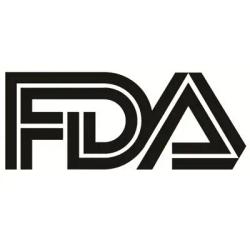
OR WAIT null SECS
AASLD Releases Updated Practice Guidance on Semaglutide (Wegovy) for MASH
The new guidance seeks to aid patient selection, comorbidity management, and monitoring the safety and effectiveness of semaglutide for MASH.
The American Association for the Study of Liver Diseases (AASLD) has released an updated practice guidance on semaglutide (Wegovy) therapy for metabolic dysfunction-associated steatohepatitis (MASH).1,2
The November 7, 2025, practice recommendation was published in Hepatology and serves as an update to the 2023 AASLD practice guidance on the clinical assessment and management of nonalcoholic fatty liver disease (NAFLD), now known as metabolic dysfunction-associated steatotic liver disease (MASLD).1,2
“This updated guidance reflects how quickly science and clinical practice are evolving and equips clinicians with the latest evidence and practical tools to manage MASLD and MASH,” Grace Su, MD, president of AASLD, said in a statement.2 “With therapies like semaglutide now available, patients and providers have new opportunities to improve liver health and overall wellness.”
Semaglutide became the second-ever FDA-approved MASH treatment on August 15, 2025. Its accelerated approval was based on interim results of the phase 3 ESSENCE trial where 72 weeks of 2.4 mg/week subcutaneous injection resulted in resolution of MASH without worsening of fibrosis (62.9% vs 34.3% placebo; P <.001 ) and ≥1 stage reduction in liver fibrosis without worsening of MASH (36.8% vs 22.4% placebo; P <.001).1,3
To develop the practice recommendation on semaglutide’s use in MASH, a writing group commissioned by the AASLD governing board examined data from the ESSENCE trial on invasive (liver biopsy) and non-invasive tests (NITs) for liver fibrosis concerning both patient selection and treatment response. They additionally reviewed published data on semaglutide for MASH and other FDA-approved indications, along with publicly available FDA documents and selected unpublished data provided by Novo Nordisk.1
While the group acknowledges that the FDA prescribing information is the official regulatory document for use in the United States, they note that this guidance serves as a practical supplement for clinicians to help guide the management of patients with MASH who are eligible for semaglutide.1
Who Should Receive Semaglutide? Guiding Patient Selection
The guidance asserts that candidates for semaglutide should have MASH with stage 2–3 fibrosis, identified using NITs such as VCTE (8–15 kPa), MRE (3.1–4.4 kPa), or ELF (9.2–10.5), rather than liver biopsy. In those with VCTE 15-20 kPa, MRE 4.4-5 kPa, or ELF 10.5-11.3, the AASLD says an individualized decision to treat should be based on exclusion of cirrhosis with another confirmatory NIT, or cross-sectional imaging excluding nodular-appearing liver contour and signs of portal hypertension, or a platelet count of <150,000/mm3.1
Additionally, while semaglutide is not currently approved to treat patients with MASH cirrhosis, defined as VCTE>20 kPa, MRE>5.0 kPa, ELF>11.3 and/or evidence of portal hypertension, the AASLD suggests careful monitoring of those with compensated cirrhosis who are receiving semaglutide for another FDA-approved indication.1
Safety Considerations for Semaglutide Treatment
Semaglutide showed a favorable hepatic safety profile in the ESSENCE trial, with no discontinuations due to liver enzyme elevations. Accordingly, the updated practice guidance recommends routine hepatic panels only as clinically indicated.1
The most common adverse events were gastrointestinal in nature, including nausea, diarrhea, constipation, vomiting, and were generally mild and transient. Of note, patient education and dose titration help improve tolerance. As described in the document, clinicians should monitor for rare but serious risks, including acute kidney injury, symptomatic gallbladder disease, pancreatitis, thyroid C-cell tumors, retinopathy progression, and lean mass loss.1
Treatment Response and Concomitant Therapy
Lifestyle modification remains the cornerstone of MASLD/MASH management alongside semaglutide. Combination use with resmetirom at the dose of 2.4 mg/week has not yet been studied.1
While no NITs reliably predict histologic response at the individual patient level, the document describes reductions from baseline to 72 weeks of treatment as being suggestive of significant improvement in MASH resolution (ALT >17 U/L or ≥20%; CAP ≥30%) and fibrosis improvement (VCTE LSM ≥30%; MRE LSM ≥20%; ELF≥0.5). Non-response may be suspected if ALT or NITs worsen.1
“This is an exciting time in the MASH field. With multiple FDA-approved therapies, AASLD is committed to leading the way in providing timely practical recommendations to clinicians on patient selection for treatment and monitoring for safety and efficacy,” Meena Bansal, MD, system chief of the division of liver diseases for the Mount Sinai Health System, said in a statement.2
References
Bansal MB, Patton H, Morgan TR, et al. Semaglutide therapy for metabolic dysfunction-associated steatohepatitis: November 2025 updates to AASLD Practice Guidance. Hepatology. doi:10.1097/HEP.0000000000001608
AASLD. AASLD Announces Update to Metabolic Dysfunction‐Associated Steatotic Liver Disease (MASLD) Practice Guidance. November 7, 2025. Accessed November 7, 2025. https://www.aasld.org/aasld-announces-update-metabolic-dysfunction-associated-steatotic-liver-disease-masld-practice
Brooks A. FDA Approves Semaglutide (Wegovy) Injection 2.4 mg for Noncirrhotic MASH. HCPLive. August 15, 2025. Accessed November 7, 2025. https://www.hcplive.com/view/fda-approves-semaglutide-wegovy-injection-2-4-mg-for-noncirrhotic-mash


